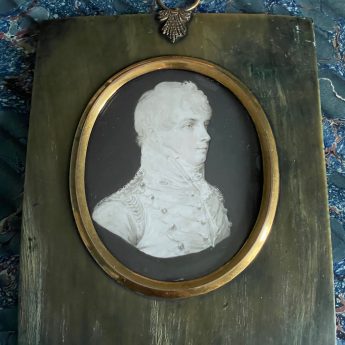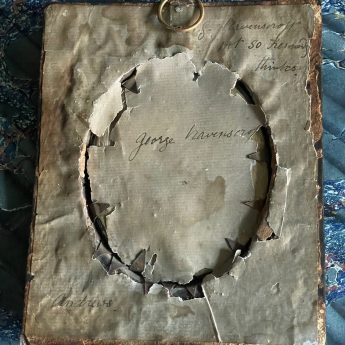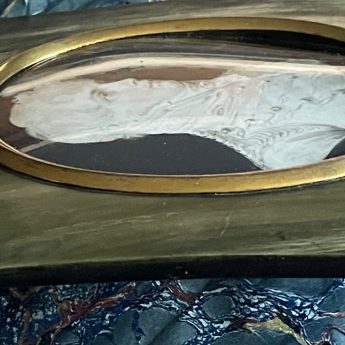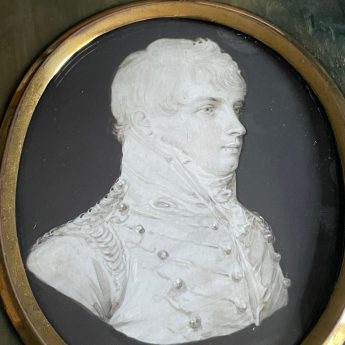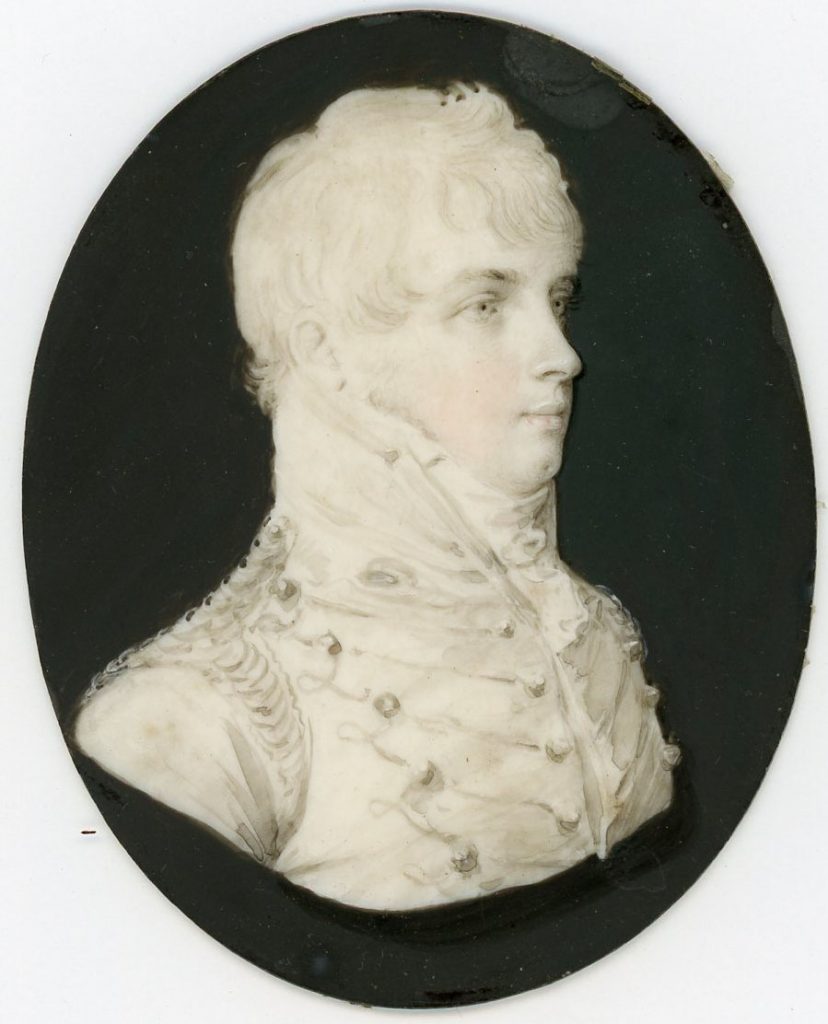
George Ravenscroft
Portrait miniatures, silhouettes, portraits & an omnium-gatherum of historical interest & character.
Enquiries and orders
George Ravenscroft
Samuel Andrews
Sold
This striking portrait is painted in the distinctive en grisaille style perfected by Samuel Andrews during his time in India. The profile is set against a darkly painted background and is painted in shades of grey watercolour with a light hint of red to the lips and cheek.
An old inscription on an inside paper repeated on the backing paper of the frame names the sitter as George Ravenscroft once described as ‘the handsomest and most athletic European gentleman then in India, and one of the most expert in the use of the sword and shield’.
Born in India in 1777, George was the eldest son of Edward Ravenscroft and Frances Elizabeth Rivott. His mother died when he was just ten years old. He joined the East India Company as a tax collector and as such would also have been part of their militia. George married Benedicta Louise Ramus, a lady of Portuguese descent, in West Bengal. The couple had 3 sons and two daughters before Benedicta died in 1818. George then married Charlotte Elizabeth Fitzgerald and with her had a son. George was murdered in 1823, aged 45.
The circumstances of his death were reported in the newspapers and are recounted at length by William Sleeman in A Journey through the Kingdom of Oude (1858). Ravenscroft ‘had been the collector of the land revenue of the Cawnpore district for many years; but, having taken from the treasury a very large sum of money, and spent it in lavish hospitality and unsuccessful speculations, he absconded with his wife and child, and found an asylum with the Rajah of Bhinga, on the border of the Oude Tarae, where he intended to establish himself as an indigo planter’. But one night in May 1823, their house was attacked by a gang of dacoits. Seven men were killed; George died the following day from his wounds. His wife and child successfully hid from the attackers and were later escorted to Lucknow. Some time later, Charlotte punished her son for some misdemeanor by locking him in a bathing room. The little boy was apparently looking at his image in a tub of water when he toppled into it and drowned.
The portrait is painted on ivory. It has a small (barely visible) area of potential water damage to the outside edge at 1 o’clock not affecting the profile; it is otherwise in fine condition and is set in the original papier-mâché frame that has an unusual olive greenish hue and is warped. The frame may have always been this shape and colour but it’s impossible to know for sure. It still hangs effectively.
Irish-born Samuel Andrews spent most of his working life in India having travelled to Madras in 1791 where he later took up occupancy of a house once lived in by fellow artist John Smart.
Item Ref. 7256
Size: framed, 150 x 127mm (5⅞ x 4¾")
